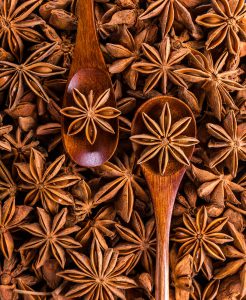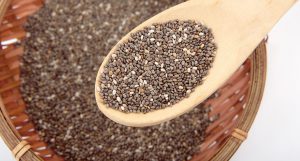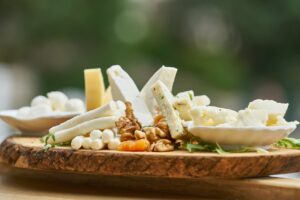Whether you’re 15 or 85, your skin’s ability to heal depends on the food you eat. Scientists have known for decades that whether the wound is from surgery, trauma or pressure, your body needs ample nutrition to heal. Wound healing is the result of complex cellular biological and physiological mechanisms that depend on vitamins, minerals, proteins and other nutrients.
When your body is working on healing a wound, it requires more calories and protein than you would regularly need. This higher nutrient burden can tax an already deficient diet plan. Age has a significant impact on healing, which may explain the rising number of older adults with chronic wounds. This has a strong influence on quality of life, ability to function, mental health and pain.
But, using current knowledge and scientific evidence, the outlook for healing wounds in the elderly is decidedly positive. Before getting into some of the tips to improve a senior’s appetite and diet, let’s take a quick peek at some of the unique challenges for seniors.
Seniors Face Unique Nutritional Challenges
People aged 65 and older make up 16% of the U.S. population. This is expected to grow to 20% by 2030. As people age, they face challenges with getting enough nutrition. This may be from chronic disease such as heart disease or diabetes, or it can be the result of a reduced appetite that makes it difficult to meet their body’s nutritional needs.
The Academy of Nutrition and Dietetics published a position paper in 2012 in which they believe all people age 60 and older may face challenges in getting enough of the right nutrition. Some of the obstacles to good nutrition for seniors include:
• Loss of taste and smell
• Loss of appetite
• Dentures and how well they fit
• Gastrointestinal changes
• Medications
• Income
• Loneliness
Although a person may “look” like they are healthy and well nourished, if the food they’re eating is highly processed and full of empty calories they may actually be malnourished. Since metabolism slows as you age, you don’t need as many calories to maintain your weight. This means even empty calorie snacks can meet your calorie requirement without meeting your nutritional needs. For some, this is how they can “look” like they are well-nourished, when in fact they aren’t.
Sometimes it may feel easier to grab a bite of packaged food than to cook a meal from whole food. However, this can lead to poor wound healing, muscle weakness, increased risk of hospitalization, and a weak immune system.
Don’t Forget the Water
Another factor that affects wound healing is hydration. Your body is nearly 60% water. When your cells get dry it’s difficult for nutrients to be delivered and used. Signs of dehydration – or not enough water in the body – include:
• Dry skin
• Sunken eyes
• Dark urine
• Fatigue
• Headache
• Low blood pressure
• Rapid heart rate
Dehydration can get extreme in seniors and can become life threatening. You may see signs like confusion, dizziness, shock or loss of consciousness.
Tips to Increase Senior’s Appetite
Possibly one of the more difficult obstacles to overcome is a poor appetite. This can be the result of a loss of taste or smell, gastrointestinal changes, poorly fitting dentures, medications and loneliness. It’s important to address these factors first to be sure something physical isn’t affecting appetite. Here are seven tips to boost the appetite for those who may not be interested in eating.
1. Social Time
Many seniors have reached a time in their life when some good friends and possibly their spouse have died. This can make for lonely mealtime and raises the potential that cooking for one has lost any appeal it may have had. Try making mealtime a social event with family or friends. Consider asking friends for a potluck dinner where everyone brings a dish.
This can stimulate your appetite and help you connect with friends. During times when it isn’t possible to socialize, it may be time to use the computer and a camera for a video call for dinner or lunch. It may not be as fun as being in person, but it can help meet the need for social interaction.
2. Movement and Exercise
Since metabolism slows with age, which in turn affects appetite, increasing movement and exercise can help boost hunger. This is possible even for those who are housebound or in a wheelchair. The idea is to move, not to run a marathon!
If you can’t get out of the house, be sure the floors at home are safe and free of obstacles. If you’ve not been moving, start by walking the length of your home several times a day, each day. If you can get outside, take a walk each day within 20 minutes after a meal. This helps the food digest better and lowers your blood sugar levels by burning the carbohydrates you just ate.
Seniors who cannot get out of a chair can still do chair exercises several times a day. This helps to strengthen your muscles, raise your appetite and improve your heart muscle. There are many chair exercises you can find free on YouTube on your phone or computer.
3. Drink by the Clock
As you age, some people lose their sense of thirst, or take medications that make it difficult to know when they’re thirsty. You’ll know if you’ve been drinking enough water when your urine is a light straw color. If you have trouble remembering to drink enough each day, consider drinking eight ounces every three hours through the day until your urine is a light straw color.
You might have to test this for a couple of days until you get the right amount of water throughout the day to keep your urine light yellow. Stop drinking about three hours before going to bed so you aren’t getting up every two hours to urinate during the night.
4. Herbs and Spices
Taste can fade with age, but adding a few extra spices to perk up food can help tempt what taste buds are left. Herbs and spices are healthier than adding salt since they usually include extra nutrients and antioxidants with the flavor. Experiment with dried or fresh herbs and a few spices until you find your favorites.
5. Add Color and Texture
When loss of smell and taste makes eating a chore, consider adding color and texture to make the meals more appetizing. Crunchy colorful vegetables make the plate more interesting and add important nutrients to your diet. Adding meat to soup or nuts to a salad can also change the texture of your meals.
6. Make Enough for Two
Sometimes cooking for one takes more energy than you’re willing to put out. If one of the reasons you’re eating less is that it’s time consuming to cook, consider making enough for two or three meals. Leftovers can be brightened up with a quick salad and reheating on the stove and not the microwave means the meal will taste more like it’s been freshly cooked. If the food freezes well, consider freezing a serving for another time when cooking is out of the question. This is a great way to keep up a senior’s appetite.
7. Make a Meal Plan
Sometimes a difficult hurdle to get past is thinking about what to make for dinner at the end of the day. You may be physically and mentally tired by the time dinner rolls around. If you know what you’re going to make and have the ingredients at home, cooking becomes a bit less mentally draining and a big step has been eliminated. Use your meal plan to organize your grocery shopping. This also helps lower your spending and helps you stick to your budget.
Pump Up Nutrition With a Proper Wound Healthy Diet
Although it’s important to eat more to maintain your health, the food you eat is just as important. Steer clear of processed foods filled with empty calories. You may feel full, but your body and skin will not be fed. This can increase the risk a wound may become chronic or infected.
Here are some tips to help raise your nutrition:
Shopping: When you’re at the grocery store, stick to the outside wall where you’ll find the fresh fruit, vegetables, meat and dairy. Sometimes the budget can’t cover all fresh food. Try to get as much fresh food as possible and supplement with frozen vegetables and processed food. Consider a farmer’s market where the produce is grown locally and the prices are often lower. If you can’t get to a farmer market, consider asking a friend or relative who may already shop at one to pick up your groceries as well.
Healthy Snacks: You may not be interested in eating big meals. If eating a lot at one time isn’t appealing, keep healthy and nutritious snacks readily available for a quick bite. Bite sized fruit and vegetables are easy to keep in the refrigerator and grab when you’re hungry. Dried fruit is a nice dessert and packed with nutrients too. Mixed nuts are high in healthy fat, protein and give a little crunch to your bite. Homemade popsicles made with fresh frozen fruit and coconut water are a healthy snack or dessert packed with nutrients. Blend the frozen fruit and coconut water in a blender and pour into popsicle forms. They take a few hours to freeze before you can enjoy the fruity goodness.
Nutritional Supplements
If you’re losing weight, are thin or can’t get enough nutrition, nutritional supplements may help. While they are not a good first choice, when you’re having trouble eating enough energy and nutrient packed foods, a nutritional supplement may help improve your wound healing and reduce the risk of hospitalization. Remember they do have a significant number of calories and sugar, so it’s important to balance your need for nutrients against the amount of sugar, sometimes up to 20 grams a serving.
Keep Your Eye on Your Nutrient Needs to Speed Wound Healing
Your body needs adequate nutrition to ensure your wound heals. Other health conditions that may impact wound healing also likely are affected by the food you eat. Heart disease, diabetes, peripheral vascular disease and kidney disease are all influenced by your diet and nutrition. These conditions in turn affect wound healing. When you can keep your eye on your nutrition and improve your appetite, you’ll have greater success improving your overall health.
Explore nutrition professionals near you.








